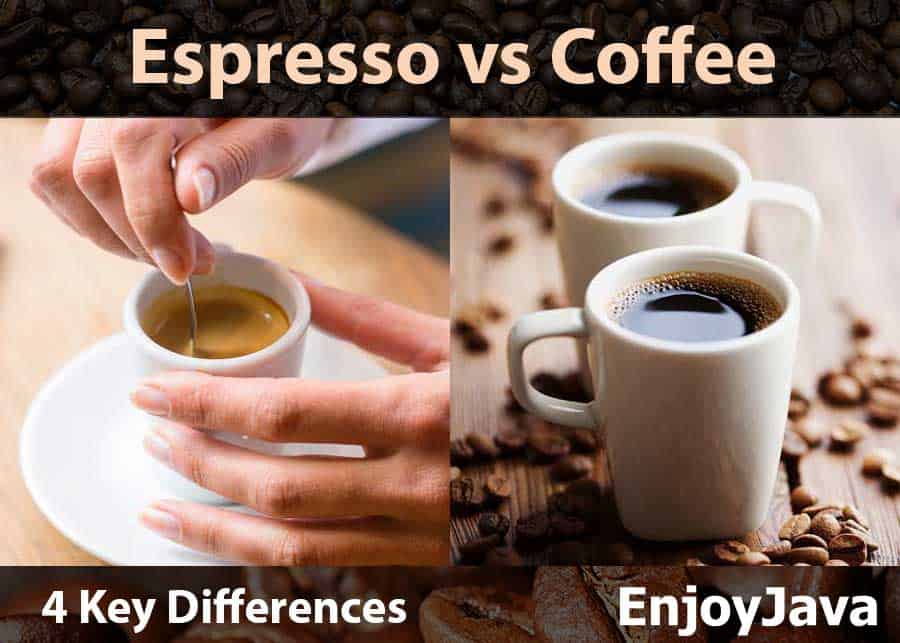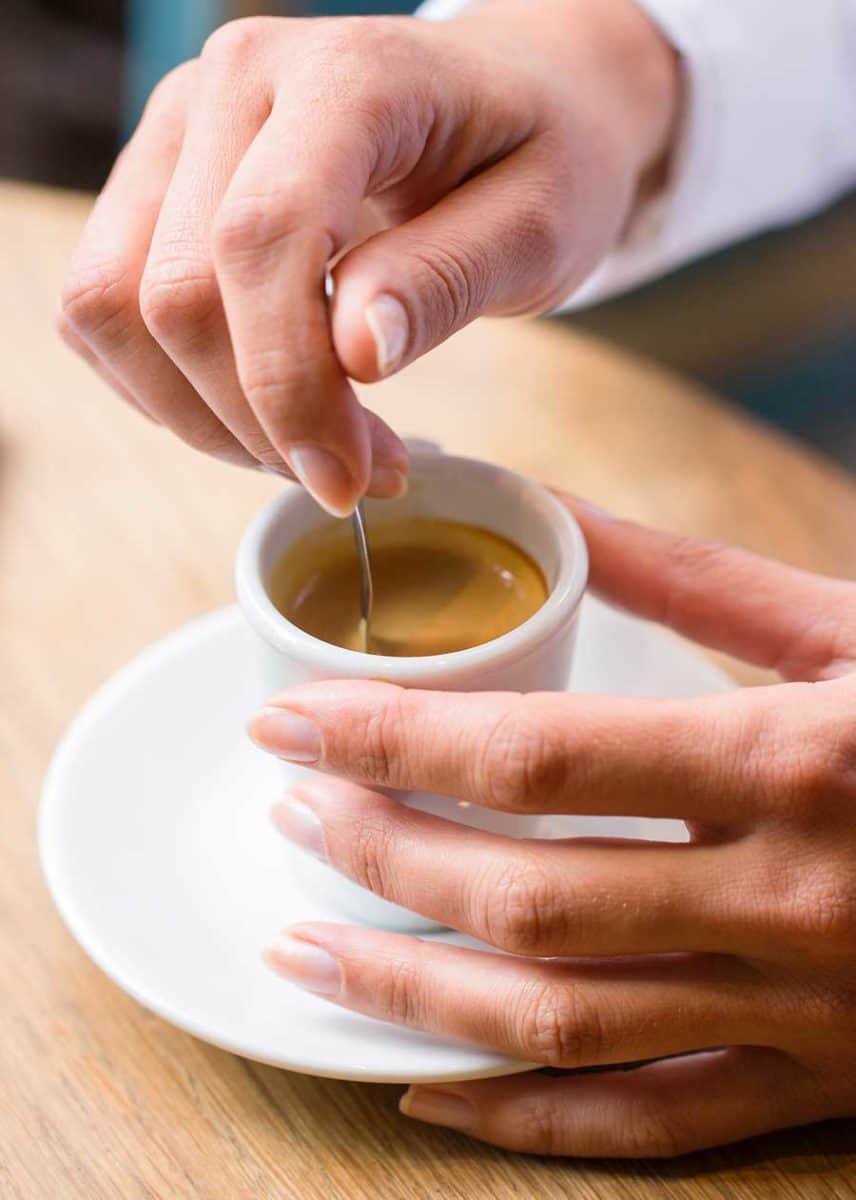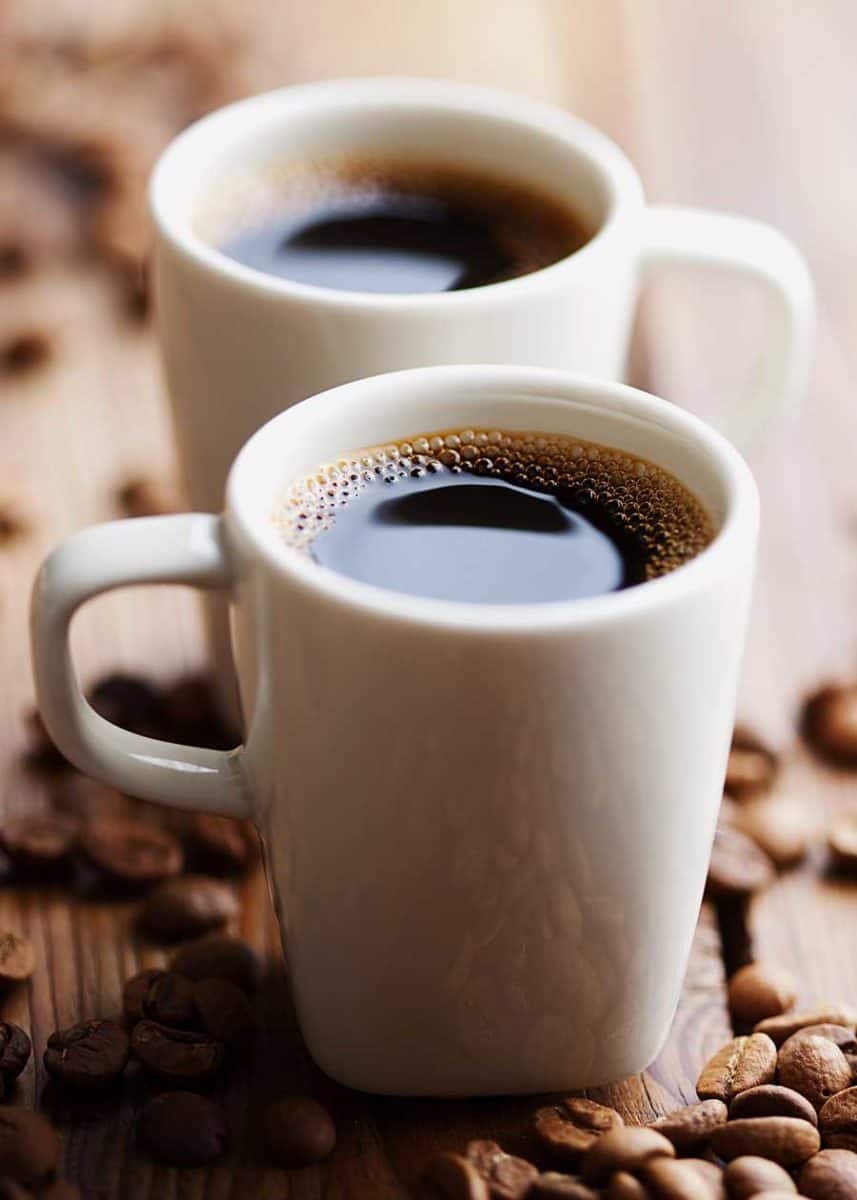How many types of coffee do you know? And how can we tell them apart? What’s the difference between espresso vs coffee? Here’s how to choose between coffee and espresso.
Espressos are a basic component of most coffee drinks, including lattes and cortados. They are made with pressurized hot water. Coffee is typically brewed with a drip or pour-over method. Drip coffee is typical at chain coffee shops. Flavor, caffeine, and grind all vary between these two drinks.

What’s the difference between espresso and coffee? Quite a lot, actually. From the brewing process to the overall flavor, every caffeine lover needs to know these four key differences between espresso and coffee!
Coffee vs Espresso
Many think of espresso as a fancier version of coffee. We’ll take a quick look at the difference between the two.
What is a Regular Coffee?
Regular coffee is a hot caffeinated beverage. It is made from roasted, ground coffee beans. Coffee is thin in consistency, dark in color, and mild to strong in flavor.
Standard coffee is what you’ll find at gas stations and chain coffee shops across Canada and the United States.
What is an Espresso?
Espresso is a small shot of concentrated coffee, although it has a different brewing process. It is thicker than coffee and has a much stronger flavor.
It is popular in Italy as a stand-alone beverage and is the foundation of many coffee drinks in America.
Espressos are common at nicer coffee shops. Starbucks, boutique coffee shops, and nice restaurants all have espresso machines for making great coffee.

4 Key Differences Between Espresso and Coffee
There’s more to espresso than simply being a concentrated version of coffee, and vice versa. These four key differences highlight why.
1. The Bean Process
When selecting coffee for brewing, it’s essential to know the difference. Espresso and coffee each come from either Arabica or Robusta coffee beans. Once beans dry, they roast for varying amounts of time to produce a wide range of flavor profiles.
Roast and Grind for Espresso
Espresso roasts are typically medium-dark range for coffee beans, and origin often plays a significant role in flavor as well.
A bean roasted for espresso needs the proper grind for optimum flavor. That grind is perfect at a fine grind between .75-millimeters and .88-millimeters.
Learn more about the five types of coffee roasts.
Roast and Grind for Coffee
The roast for a drip coffee depends on who is preparing the coffee. There are light roasts, medium roasts, and dark roasts, each with a unique blend of flavors and acidities.
Roasts and grind will depend significantly on the method of brewing your cup of coffee. An extra coarse grind is perfect for a cold brew but will feel watery with a sub-three-minute pour-over.
Learn more about the differences between espresso beans vs coffee beans.
2. Brew Method: Espresso vs Coffee
First and foremost, espresso is a method of brewing coffee. The standard coffee maker won’t produce espresso by putting in the right beans. Plus, your regular ground coffee will lack flavor, body, and volume should you try to brew it in an espresso machine.
Pulling a Shot of Espresso
The correct term for brewing is known as pulling a shot. This process starts with very finely ground coffee beans and a small amount of hot water.
Then, an espresso machine forces hot water (90 – 96 °C/195 – 205 °F) through the packed grind at around 10 bars of pressure. A typical amount is two ounces of espresso or Doppio.
Brewing a Cup of Coffee
Brewing a cup of coffee comes in wide varieties. You could, for example, use a French press, a Chemex, a Siphon, or an Aeropress. The options are endless.
Regardless of the method, the standard grind is much larger than an espresso grind. The coffee is also usually in contact with the water for a longer amount of time.
A standard cup of coffee is 6 ounces.

3. Caffeine Content
Another misconception about a shot–or-two of espresso is that it has more caffeine than a cup of coffee. While a cup of coffee isn’t as “intense,” it provides a more significant jolt.
Amount of Caffeine in Espresso
A single shot of espresso has less caffeine than an 8-ounce cup of coffee. In fact, a single shot of espresso only has 64-milligrams of caffeine.
And then there’s always the doppio which has 128-milligrams of caffeine!
Amount of Caffeine in Coffee
The standard brew of coffee in an 8-ounce mug packs 96-milligrams of caffeine.
That number will be much higher if you use Robusta beans instead of Arabica beans. If you’re looking for a real kick, you could always go for a combination of the two—red-eye!
Here’s how caffeine content in coffee vs tea compares.
4. Flavor and the Creations
Coffee shops get a lot of heat for how to order a great cup of coffee.
Sure, the non-fat, no-whip Triplo latte with two pumps of vanilla sounds complicated, but it describes the process!
Espresso Flavor and Drinks
As a concentrated form of coffee, espresso takes on a more acidic and bitter flavor. Espresso provides the coffee base for several other beverages, often including steamed milk and cream.
These beverages include cappuccino, latte, Americano, flat white, and macchiato. Flavorings and syrups combine well with these combinations to boost the range of flavors.
Coffee Flavor and Styles
The flavor of a regular cup of Joe depends wildly on bean selection, brewing process, and grind. K-cups and instant coffees notoriously produce watery coffee that lacks flavor.
Still, more involved procedures like the French press or pour-over give much tastier, full-bodied brews. Creamers, sugars, honey, and syrups are also popular additions for brewed coffee.
Learn more about other types of coffee.
Which is Better? Coffee vs Espresso
Espresso and brewed coffee are different in unique ways.
- Espresso has less caffeine per serving but can easily be stacked.
- Coffee has a wide variety of brewing methods, and striking a balance with time and grind size will affect flavor.
When matching up espresso versus coffee, the winner depends on how you intend to enjoy your caffeinated beverage! And your personal flavor preferences.
For a comparison that is more similar, you might enjoy our comparison of Americano vs Drip coffee.
Final Thoughts on Coffee Choices
Is espresso the same as regular coffee? No, but it’s easy to see why many consider espresso as just a tiny, concentrated cup of coffee.
In reality, espresso is a brewing method that extracts high-quality flavor and aroma using a fine grind and high pressure.
Espresso and coffee come from the same beans and use the same roasting process. The versatility of espresso makes it popular because it’s used as a base in so many caffeinated beverages. But it’s very satisfying all by itself as well.
On the other hand, coffee is a taller beverage with more caffeine per serving than its concentrated sibling. It takes on flavors from roasts, grinds, and brewing methods. Brewing an excellent cup of coffee can be a complicated affair, but the result is worth the wait!
- About the Author
- Latest Posts
Dena Haines is a co-founder and blogger on EnjoyJava – and is working to make it the best coffee blog in the world.
She also blogs about travel at Storyteller.Travel and photography at Storyteller Tech. Dena is a partner at Storyteller Media, a publishing company she started with her husband, Bryan.
